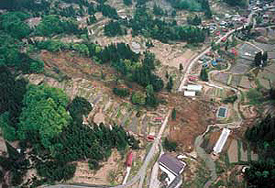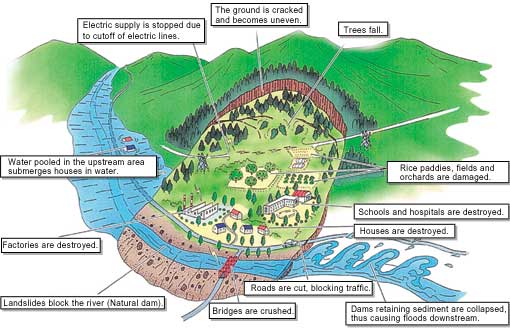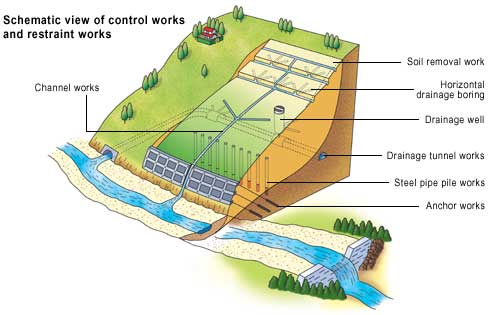A landslide is a phenomenon in which soil mass on a slope moves slowly along the slip surface downward the slope under the influence of ground water and other causes. Since landslides occur over an extensive area and a large amount of soil mass is moved in general, it can cause serious damages.


Preventive measures against landslides
A landslide is caused by a combination of various factors (topography, geology, geological structure, ground water, etc.). Accordingly, measures to be taken for landslide prevention come in a variety of types. Broadly the landslide preventive measures are classified into two types of works: control works and restraint works.
The control works are intended to remove or mitigate factors which may lead to the occurrence of a landslide. On the other hand, the restraint works aim at stabilizing a slope by the construction of structures. Landslide-prone slope is effectively stabilized by the combination of both types of works
